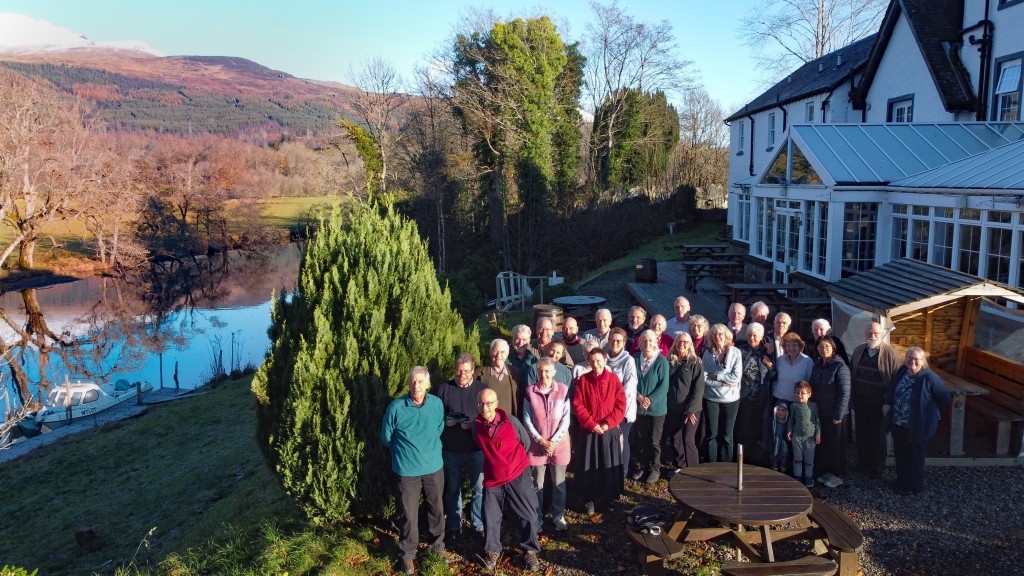The 2025 Torrance Retreat invited participants into a deeper exploration of what it means to live “in Christ,” drawing on the Trinitarian, Christ-centred theology of J.B. and T.F. Torrance. Starting with the question of what God breathed into humanity at creation, the retreat emphasised that human beings are not disembodied souls simply waiting for escape but embodied creatures whose hope is resurrection life in union with Christ. From the beginning, it was stressed that genuine Christian life flows not from human striving but from sharing in Jesus’ own life, responses, and communion with the Father through the Spirit.
Major themes of the 2025 Torrance Retreat
1. Humanity and Creation
- Human beings are unified, embodied creatures.
- Biblical anthropology rejects body–soul dualism and grounds hope in resurrection.
- Creation is sustained by God’s ongoing presence, not independent or divine in itself.
2. Union with Christ
- Christ lives our life, offers our worship, and responds to the Father on our behalf.
- Repentance, sanctification, and knowledge of God are participatory realities, not self-generated achievements.
- Christian life unfolds between the old age and the new creation, grounded in Christ’s death and resurrection.
3. Ethics in the Resurrection
- Moral knowing is reshaped by participation in Christ’s risen life.
- Forgiveness and justice arise from the logic of grace, not retribution.
- Reconciliation is possible because God has united himself with the human condition in Christ.
4. Trinity and Communion
- The gospel is covenantal, not contractual; it restores communion with Father, Son, and Spirit.
- Worship and mission flow from God’s love and Christ’s mediation, not human effort.
- The Trinity is not a peripheral doctrine but the core grammar of Christian faith.
5. Incarnation and Revelation
- In Jesus, God unites himself with humanity without confusion or separation.
- True knowledge of God requires revelation, not mere observation.
- The Spirit draws believers into the same relationship Jesus shares with the Father.
6. Faith, Science, and Creation
- Science and faith are complementary when both are understood within a Trinitarian vision.
- Wonder and doxological gratitude are foundational to scientific inquiry.
- Christian scientists bear hopeful witness to God’s purposes in creation.
7. Preaching, Teaching, and Formation
- Preaching begins with Christ’s completed work and avoids moralistic burdens.
- Christian community is participatory, relational, and Spirit-shaped.
- Teaching children the Trinity plants early seeds of relational, Christ-centered faith.
8. The Christian Vocation
- All vocations—scientific, pastoral, educational, communal—are forms of participation in Christ’s ongoing ministry.
- Christian life is not divided into sacred and secular realms.
- The Spirit empowers believers to live within the Triune communion and bear witness to God’s renewing work in the world.
As the sessions unfolded, the theme of participation took centre stage. Speakers explored how union with Christ shapes repentance, sanctification, ethics, and human identity. Christian ethics was shown to arise from participation in Christ’s risen life rather than from abstract moral principles or innate capacities. This resurrection-shaped vision of forgiveness and justice illuminated examples from history and contemporary witness where individuals and communities lived out practices only possible through the mind of Christ.
The retreat then turned to the heart of Christian worship and mission: communion with the Triune God. By contrasting contractual, works-focused religion with the covenantal life revealed in Jesus, participants saw how mission flows from God’s love rather than human pressure and how the Trinity provides the grammar for understanding who God is and how God relates to creation. This vision was further developed through reflections on the incarnation—God becoming human in such a way that true knowledge of God requires revelation and transformation in the Spirit.
The integration of faith and daily vocation, especially scientific work, added a practical dimension. A Christ-centred, Trinitarian understanding of creation dissolves the artificial divide between science and faith, inviting scientists to work with wonder, humility, and hope as participants in God’s ongoing creative activity.
Attention then turned to the pastoral and educational implications of life in Christ. Effective preaching avoids moralism and begins with what Christ has done on our behalf. Children, too, can be welcomed into this life through simple, relational introductions to the Trinity—teaching them from an early age that God’s life is communion and that they are included in it. The final plenary wove these threads together by affirming that human beings are unified creatures called into the Triune “dance” of love and that Christian life in every sphere—scientific, pastoral, communal—flows from participation in Christ’s transforming life.
This post is also available in a PDF version. Additionally, a blog post about the retreat is available here.

